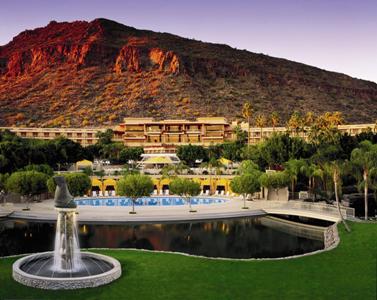By Don Weiner
Arizona’s tourism industry expects to take more than a few hits from an uncertain economy. “Whenever we see a downturn in the economy like this, especially when the staples of life are so much more expensive — food, gas, that sort of thing — it does have some downward pressure on leisure travel. People are less inclined to travel,” says Jonathan Walker, president and CEO of the Metropolitan Tucson Convention & Visitors Bureau. “They’re traveling for shorter periods of time or cutting out travel altogether.”
But for every hit from soaring fuel prices and consumer cutbacks, Arizona tourism can deliver some pretty effective counterpunches. Its luxury resorts and spas, gourmet dining establishments and world-class golf courses are no less attractive to high-value visitors. Scenic wonders such as the Grand Canyon and a favorable climate are still huge draws. Major events should continue to attract crowds. And visitors from near and far are still intrigued by the state’s mixture of Hispanic, American Indian and cowboy cultures.
“What’s great about Arizona is we have the whole package,” says Debbie Johnson, president and CEO of the Arizona Hotel & Lodging Association.
Cheryl Cothran, a Ph.D. and director of the Arizona Hospitality Research and Resource Center at Northern Arizona University, notes that the travel industry has historically been a big part of the state economy.
“Tourism has always been important,” she says. “It looks like going forward a couple of decades it’s going to continue to be that way.”
She also points to a few factors that, while not recession-proof, are still encouraging.
Cothran says state tourism is population-driven. As the metropolitan Phoenix and Tucson areas continue to grow, an increasing number of visitors are coming to see family and friends. In fact, a research presentation for last year’s Arizona Governor’s Conference on Tourism shows that 46 percent of nonresident overnight visitors indicated they came here specifically for that reason. It was still the main reason when it came to Arizona’s resident overnight visitors. In other words, don’t expect Mom and Dad to give the kids a pass on visiting just because they’re feeling some pain at the pump.
Then there are those who fill the resorts, book the tee times and top off their days with some fine dining.
“Those high-income visitors who travel to the expensive resorts and spas are probably not going to change their plans that much,” Cothran says.
In fact, a report she prepared, “Arizona’s Tourism Future: Effects of Population & Demographic Change,” states that the bulk of travel spending is by the top 20 percent of affluent households.
Even with this market segment, however, there are some definite challenges.
First, experts agree that Arizona is primarily a fly-in market, and the fact is that airlines are trimming routes and downsizing some planes heading to various destinations.
Also, according to Johnson, visitors may be doing some downsizing of their own.
“I think what you see generally sometimes is that people who might have stayed at a … luxury resort are maybe dropping down a tier,” she says.
This has resort operators working extra hard, says Rachel Sacco, president and CEO of the Scottsdale Convention & Visitors Bureau.
“The only thing that you can do in a destination like this, where you are very dependent on a fly-in market, is really to just look at your customers and hopefully you’ve done a very good job of creating value, a great experience and (are) making it very, very difficult for your customers to say, ‘Oh, I’m going to skip my trip to Scottsdale this year,’” she says.
This may equate to credits that can be used for spa treatments, meals or golf. It may even mean gasoline credits.

“Maybe there are high-end customers less concerned about discounting, but they certainly want value,” Sacco says. “And the smart approach is make them feel like they’re always getting more than what they’re giving.”
Sacco also says area restaurants and retailers are feeling the pinch. Some have told her tourism accounts for as much as a third of their bottom line.
“And for a restaurant to even say 20 (percent) or 25 percent, that’s a large amount,” she says.
One sensible marketing strategy, according to Johnson, is to reach for what she calls “lower-hanging fruit.”
“I think what we’re finding and what we’re seeing already is that people are traveling closer to home,” she says. “And so for us, what that means is kind of changing a little bit of our marketing strategy and make sure that we’re doing a good job of marketing to our residents and to people that are within a good driving distance to Arizona.”
www.visittucson.org
www.azhla.com
www.nau.edu
www.scottsdalecvb.com




